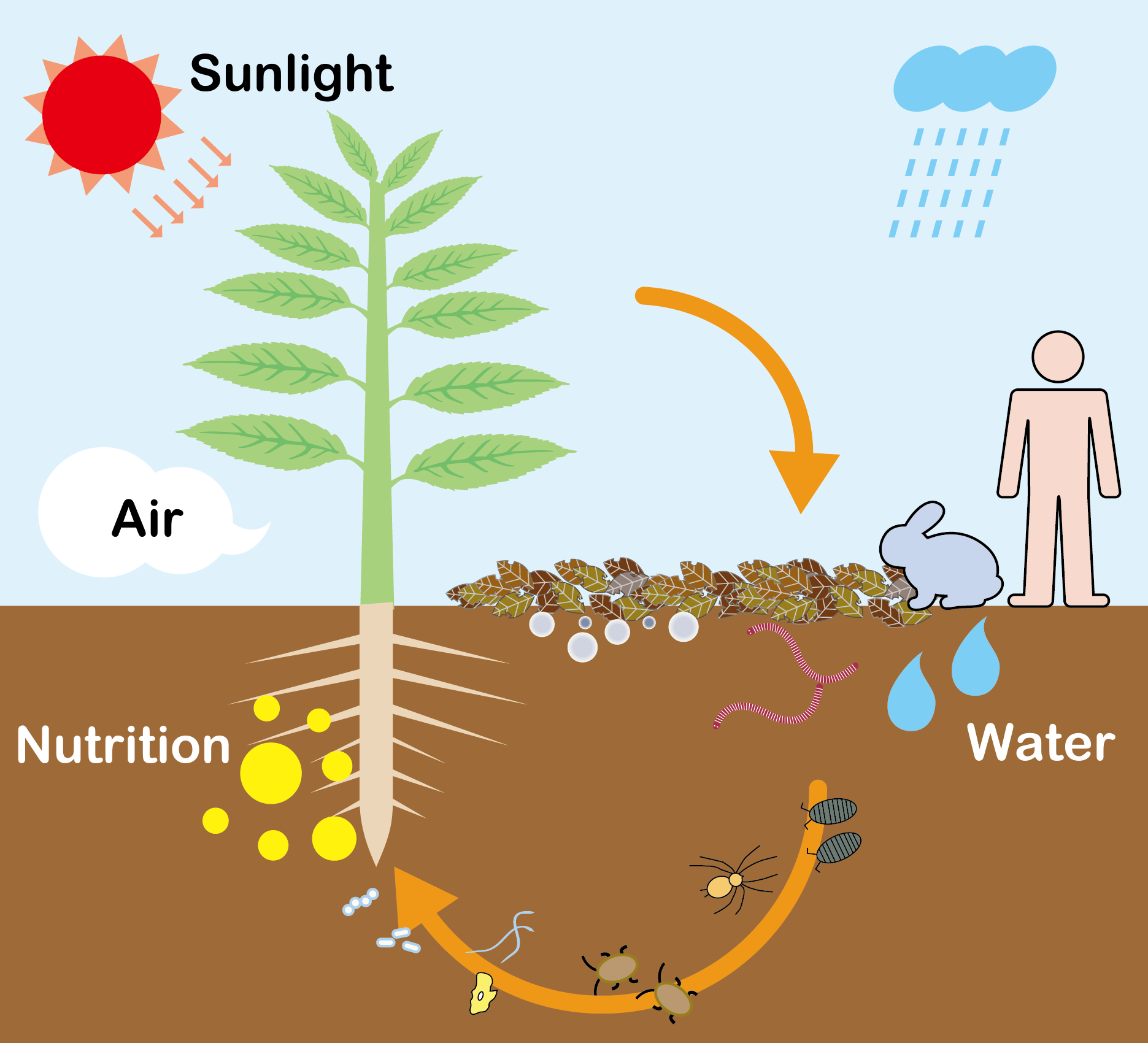There are some basic approaches in Nature Farming.
The ingenious mechanisms of nature cannot be understood simply by looking at it. It is necessary first to closely observe nature.
Why do roots, stems and leaves develop from a tiny seed and flowers bloom? Why do countless trees grow on mountains? We can only understand part of nature and its complicate mechanisms.
Nevertheless, we tend to look upon some plants, insects and microorganisms as evils, considering only our convenience, and try to eliminate them as weeds, pests or pathogens. They, however, all have some roles within the great mechanisms of nature. Therefore, it is necessary not to look upon them as our enemies but to consider their roles in nature.
There are three principles in observing nature.
Human beings do not live in the same way as other animals do. We are equipped with ability to improve ourselves and words to share our knowledge and experiences. We can produce our food by cultivating the soil and raising animals. On the other hand, we can kill other living things and destroy nature by spreading artificial chemicals, which are products of our knowledge and experiences.
To benefit abundantly from nature, it is necessary to relate ourselves properly with nature. What we are required now is to relate ourselves with nature without contradicting nature and placing too much load on the environment. For this, we need to understand nature’s principle of more living things harmonizing more richly with each other. It allows us to realize that we are a part of nature and are allowed to live by nature.
We can harvest rice from a paddy field four hundred times the amount of rice grains sown in the field, because we grow seedlings and cultivate them in a properly managed paddy field. Paddy fields also serve as places to breed for insects and animals, such as dragonflies, contributing to affluence in nature.
It is necessary to understand the mechanisms of nature and to derive their functions “to allow the soil to exert its power,” or the principle of Nature Farming. The largest mechanism of nature is “the circulation through living things.”
During the 3.5 billion years after life forms appeared on earth, there were many drastic climate changes and geophysical activities. Although many living things were perished each time, nature repeatedly allowed more living things to flourish.
The main role in the flourishment were played by plants, small animals and microorganisms. Plants and some microorganisms synthesize sugar, protein or lipids by fixing solar energy. Animals and insects feed on such sugar and protein. Dead bodies of plants and animals are decomposed by small animals and microorganisms and returned to the soil to be used as nutrients for plants. This circulation of matter has produced a variety of living things abundantly and formed rich soils. We human beings have been born and live in this circulation mediated by living things
Today, this circulation is disrupted in various places, and the soil is less seen in cities. Even in rural villages, which were supposed to have rich nature, the use of various pesticides and chemical substances has caused a drastic decrease of small animals and microorganisms, which play important roles in the circulation.
Our lives are full of petrochemical products, and we eat farm products imported from distant countries and produce a large amount of waste without placing it in the circulation. It is now necessary for us to realize that we have been allowed to live within the circulation and chain of life forms.
Circulation of matter, energy and life mediated by living things
